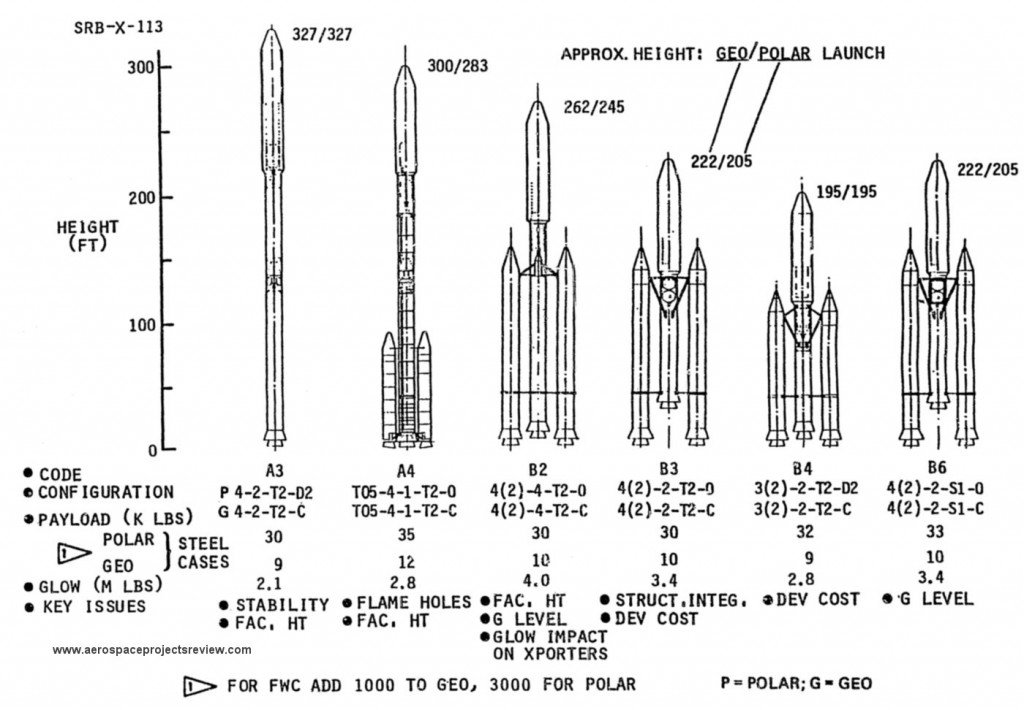The SRB-X is one of the most derided launch vehicles ever seriously considered. Initiated by NASA in the early 1980’s, the idea was to use Shuttle hardware – specifically Reusable Solid Rocket Motor components – to provide Shuttle-class payload capability. Theoretically the SRB-X, a stack of large solid rocket motors, would provide a low-cost semi-reusable launcher that would be rugged, reliable and could continue to fly if the shuttle itself was laid up for some reason. In reality, it would very likely have been every bit as expensive as we’ve come to expect from the Shuttle program.
In 1983 Boeing analyzed the SRB-X system for NASA, studying detailed designs as well as a range of alternates. The basic SRB-X booster used a core vehicle composed of RSRM segments, using RSRMs as boosters. In order to use stock Shuttle launch facilities, the boosters were mounted well outboard of the core… with the same separation distance as between the RSRMs on a standard Shuttle stack. This added considerably to structural weight. Alternates studied included versions that were just linear stacks of RSRM-derived stages (leading to very long boosters) and versions that used Titan hardware including the UA-1205 boosters and the Titan III first stage as the second stage of the vehicle.
